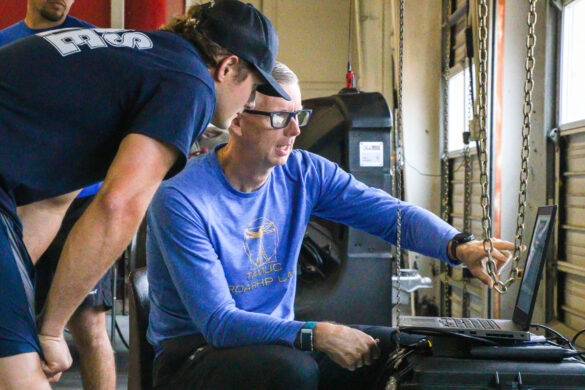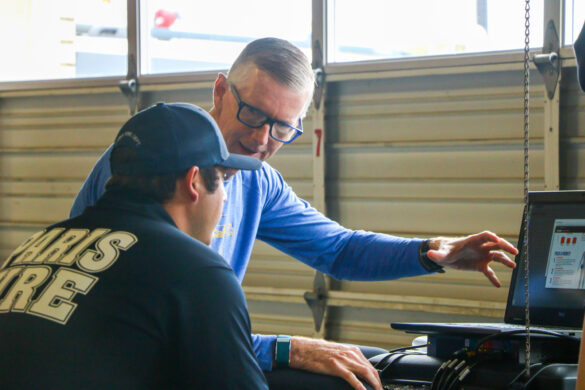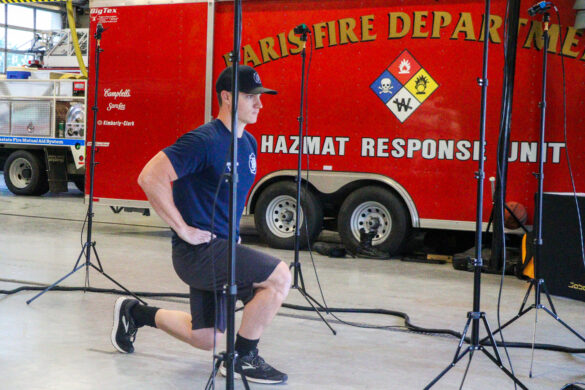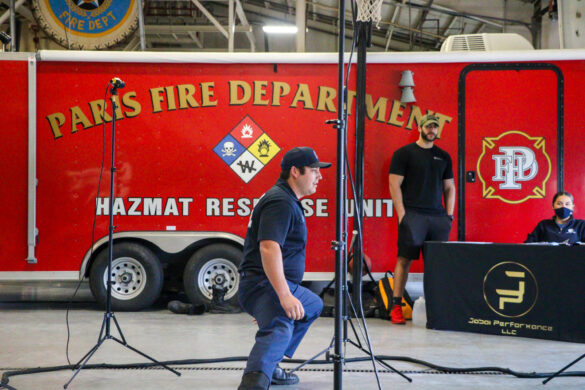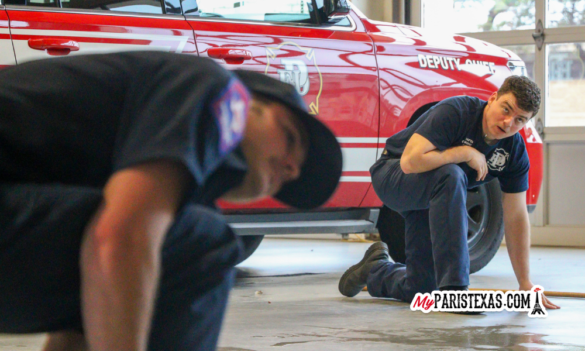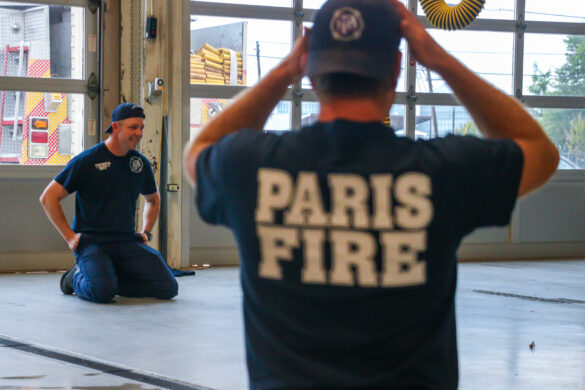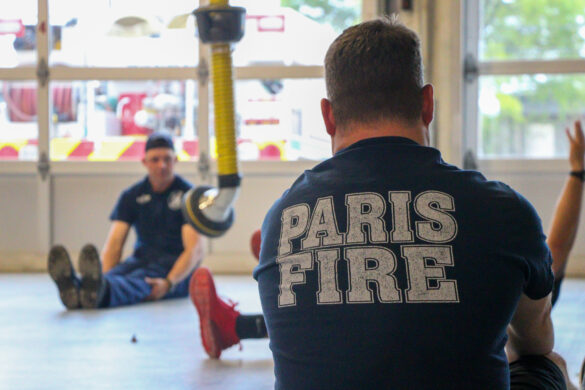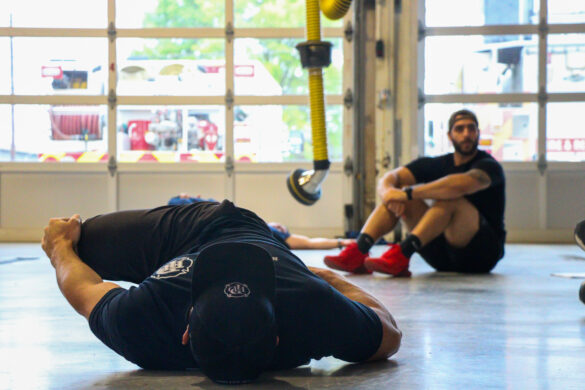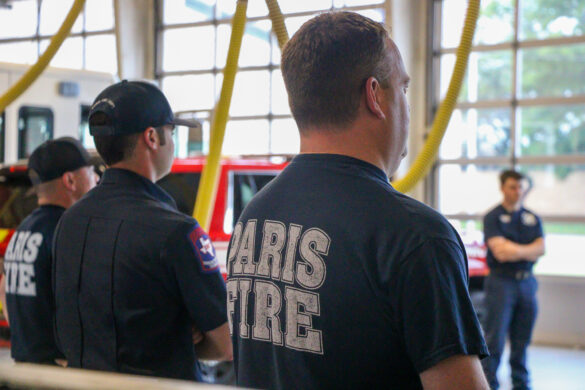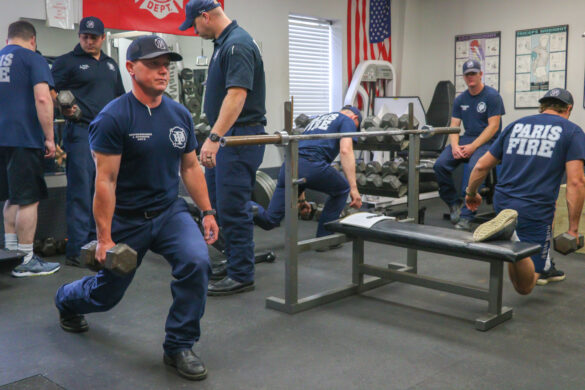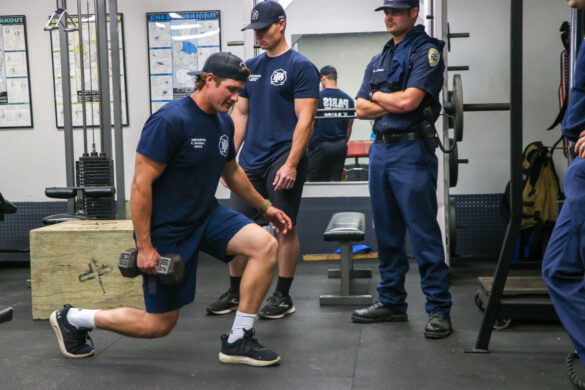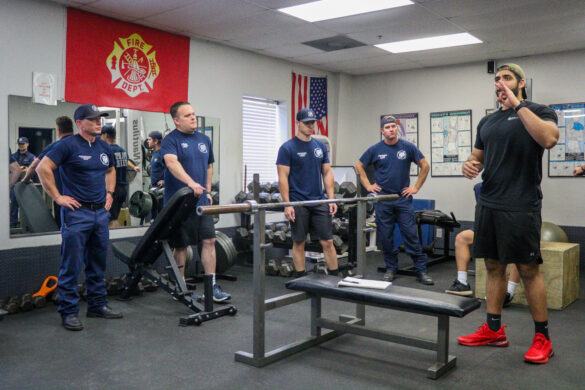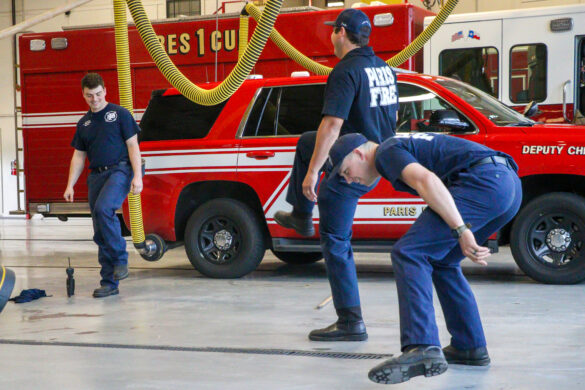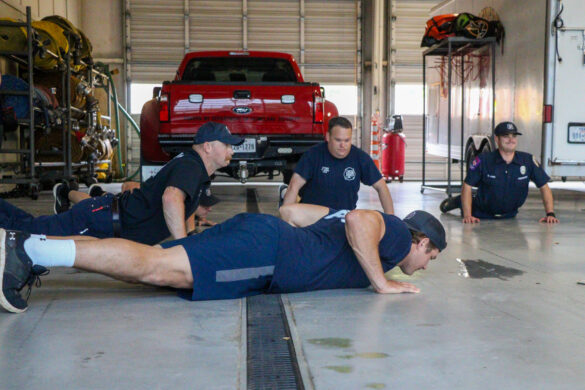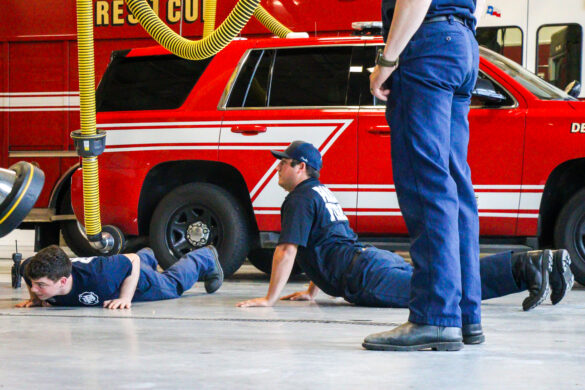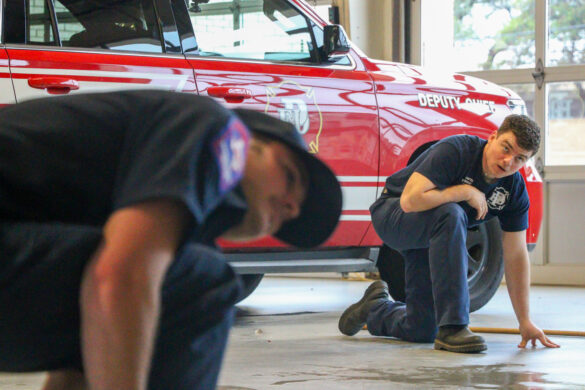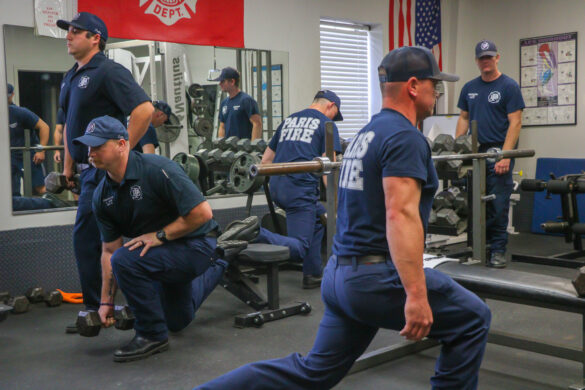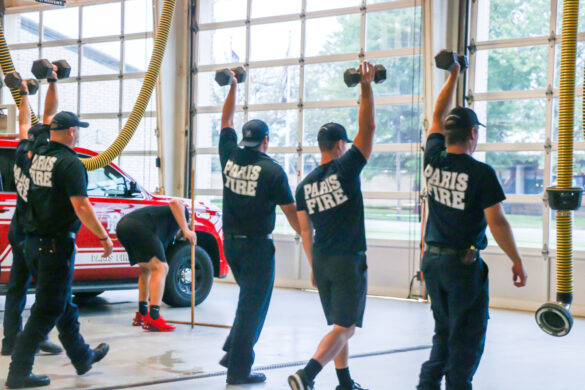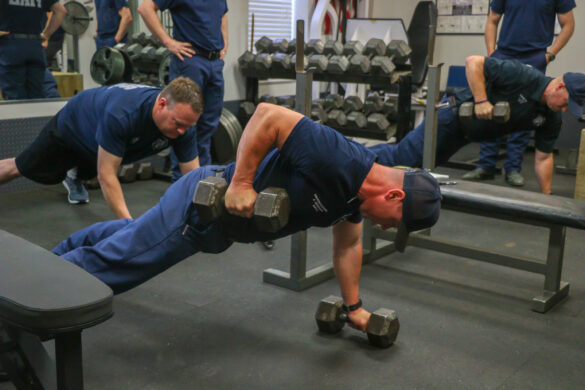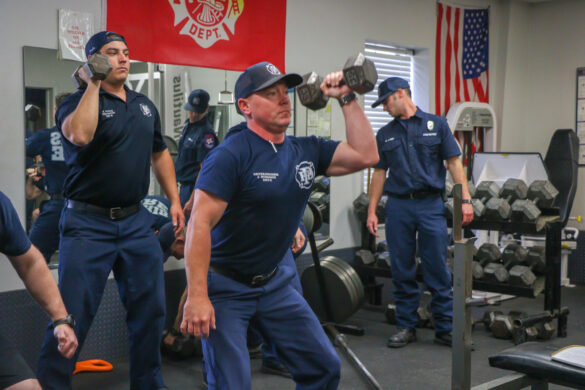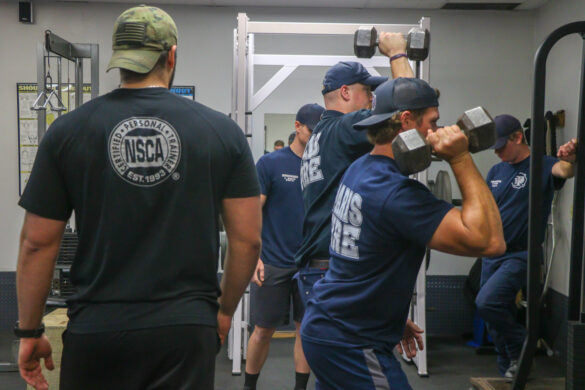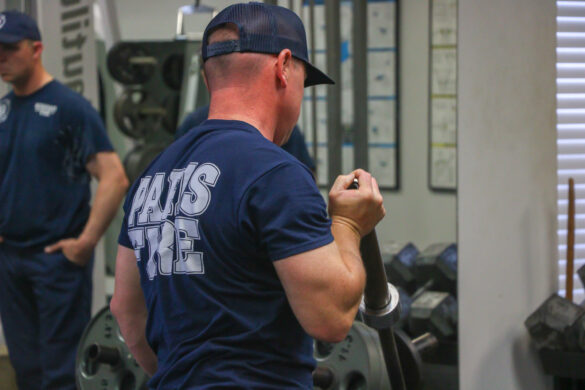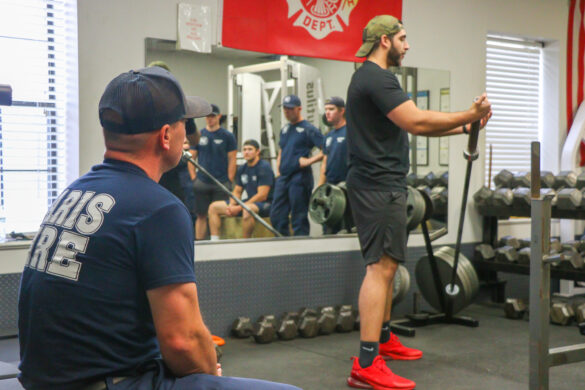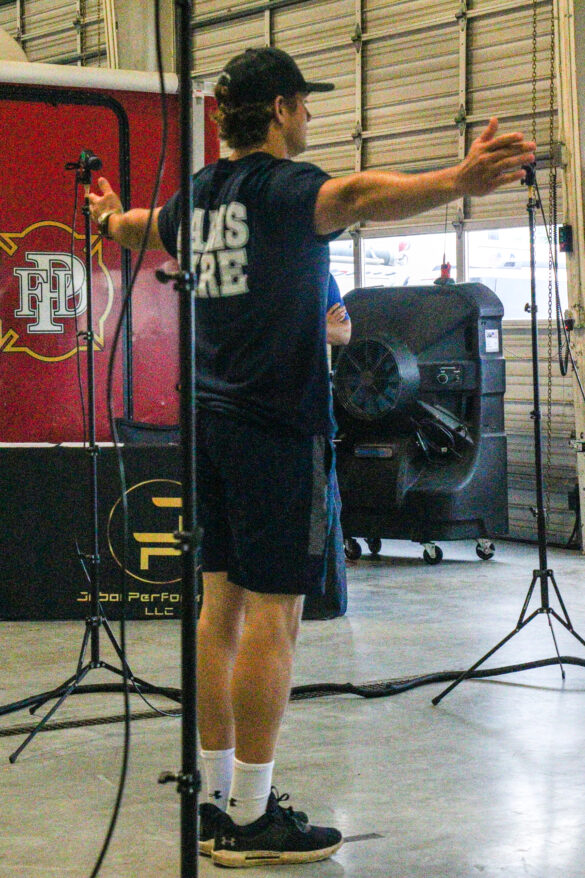It was determined Paris Fire Department firefighters “put the fitness of their firefighters as a high priority,” after a team of Texas A&M researchers assessed preliminary data on the department’s team. Utilizing a motion-capture system to find the joint center and assess the team’s mobility, the firefighters began their part in a study on how strength and conditioning could improve firefighters’ and first responders’ lumbar spine.
“(Paris Fire Department firefighters) are strong, flexible, tactical athletes,” said TAMU-C Dr. Michael Oldham, Ad Interim Instructor and Sport Science Researcher. “So, it’s a testament to the program they already have instituted.”
Dr. Oldham said the team wanted to continue its study using the DARI Motion Sensor system to determine how strength and conditioning could help improve the lumbar spine of firefighters.
“From our perspective, these (firefighters) are tactical athletes,” said Dr. Oldham. “We have a motto in the National Strength and Conditioning Association, ‘Live Stronger, Live Longer.’ So if we can train them as tactical athletes, and make them stronger for their job task, then they will not only become more efficient at their job tasks, but they will survive longer doing the job as well.”
Paris Fire Department firefighters will perform a stretching and exercise regimen catered to their job tasks for six weeks. The guys will do these exercises every three days – a typical firefighter schedule.
“We’re seeing, on a full-time, 24-hour on, 48-hour off, firefighter schedule, how the implementation of a 6-week program can influence and improve the health of the spine in firefighters,” said Hussien Jabai, owner of Jabai Performance and the tactical strength and conditioning instructor.
Jabai said specific areas parts of the human body need to remain stable, structured and need not be free moving.
“Your knee, for example,” Jabai said, “bends, but you want it to be structured and in that one plane of motion. If your knee starts to rotate – not the leg, but specifically the knee joint – we don’t want that. It needs to be stable. Now the hip, we want that to be mobile. That’s why we’re pinpointing that, because if you have a lack of mobility in the upper back, then you start to compensate for your lumbar – the lower back – that’s when your increase of injury starts to happen.”
The team of researchers from TAMU-C will return to Paris Fire Department after the six-week training to re-assess the firefighters using the DARI Motion Sensor. As the system has preliminary results from Wednesday’s assessment, the team believes there will be a significant improvement in firefighters’ lumbar and overall mobility.
“We hypothesize that strength and conditioning program will improve their mobility,” said Dr. Oldham. “We already have a good idea that that’s what’s going to happen, and we certainly don’t want to see their mobility go down.”


